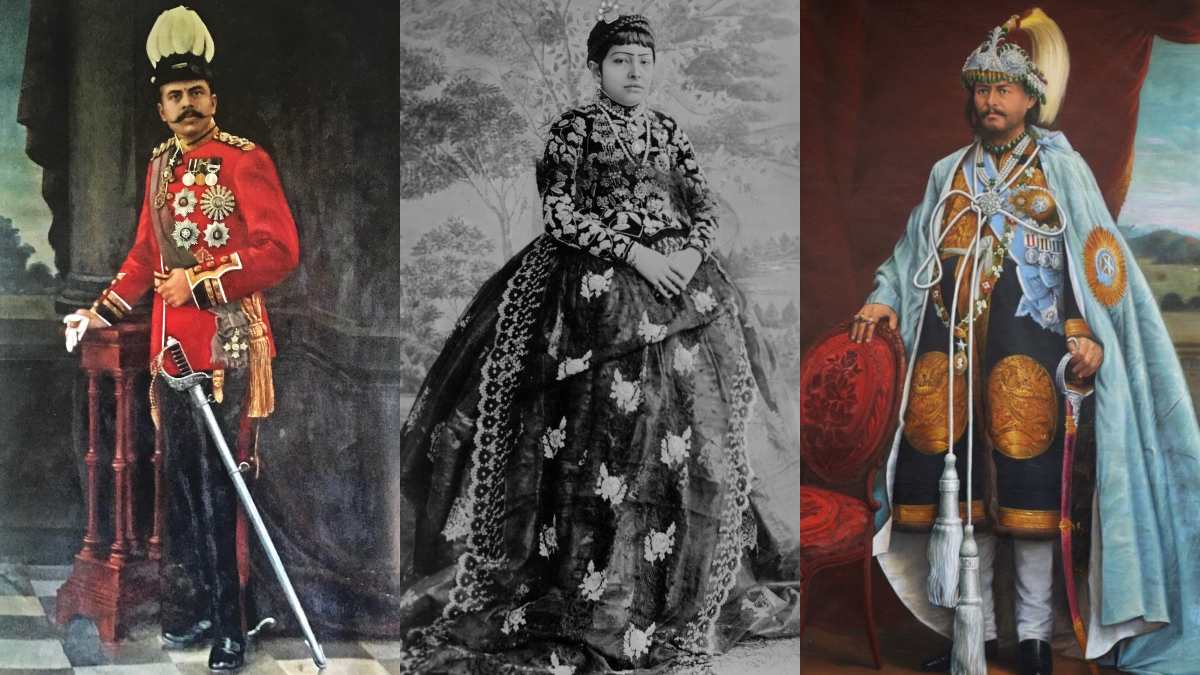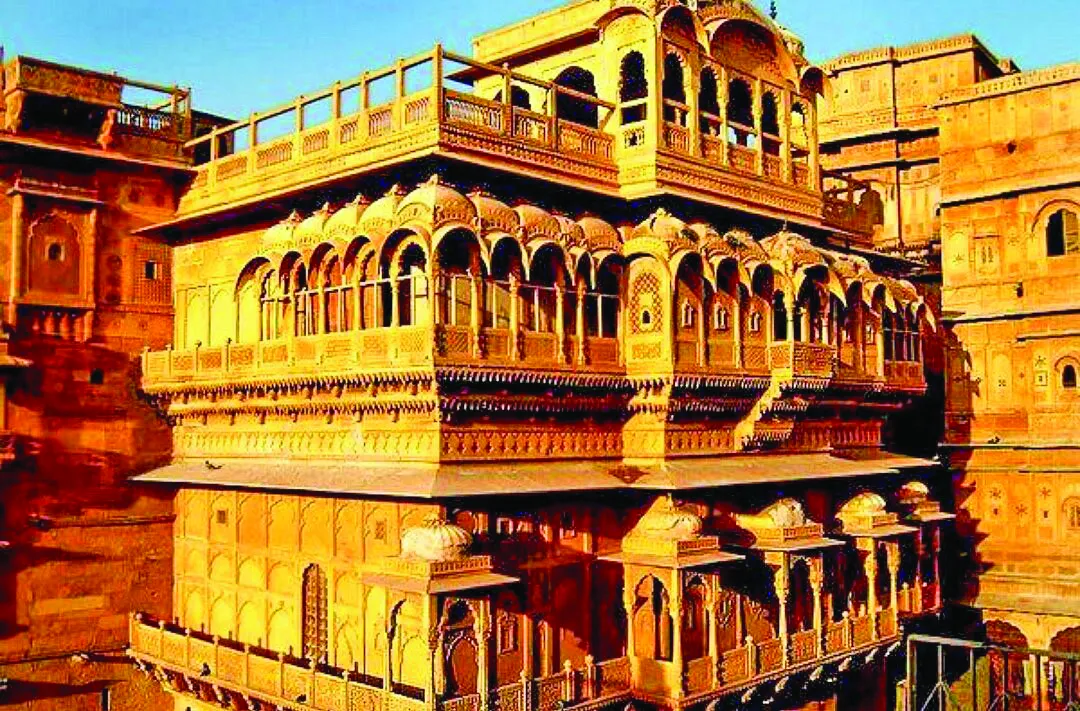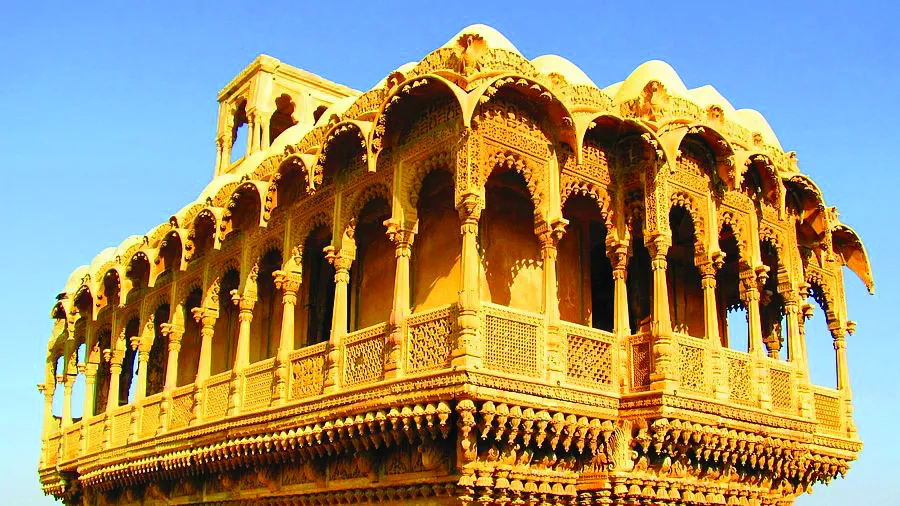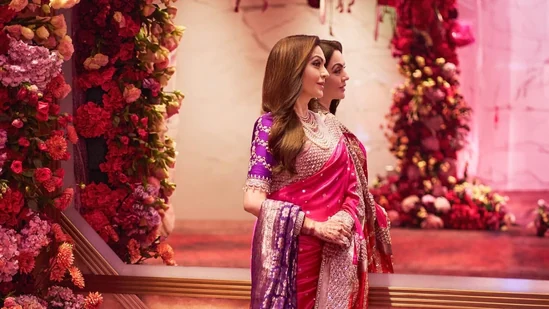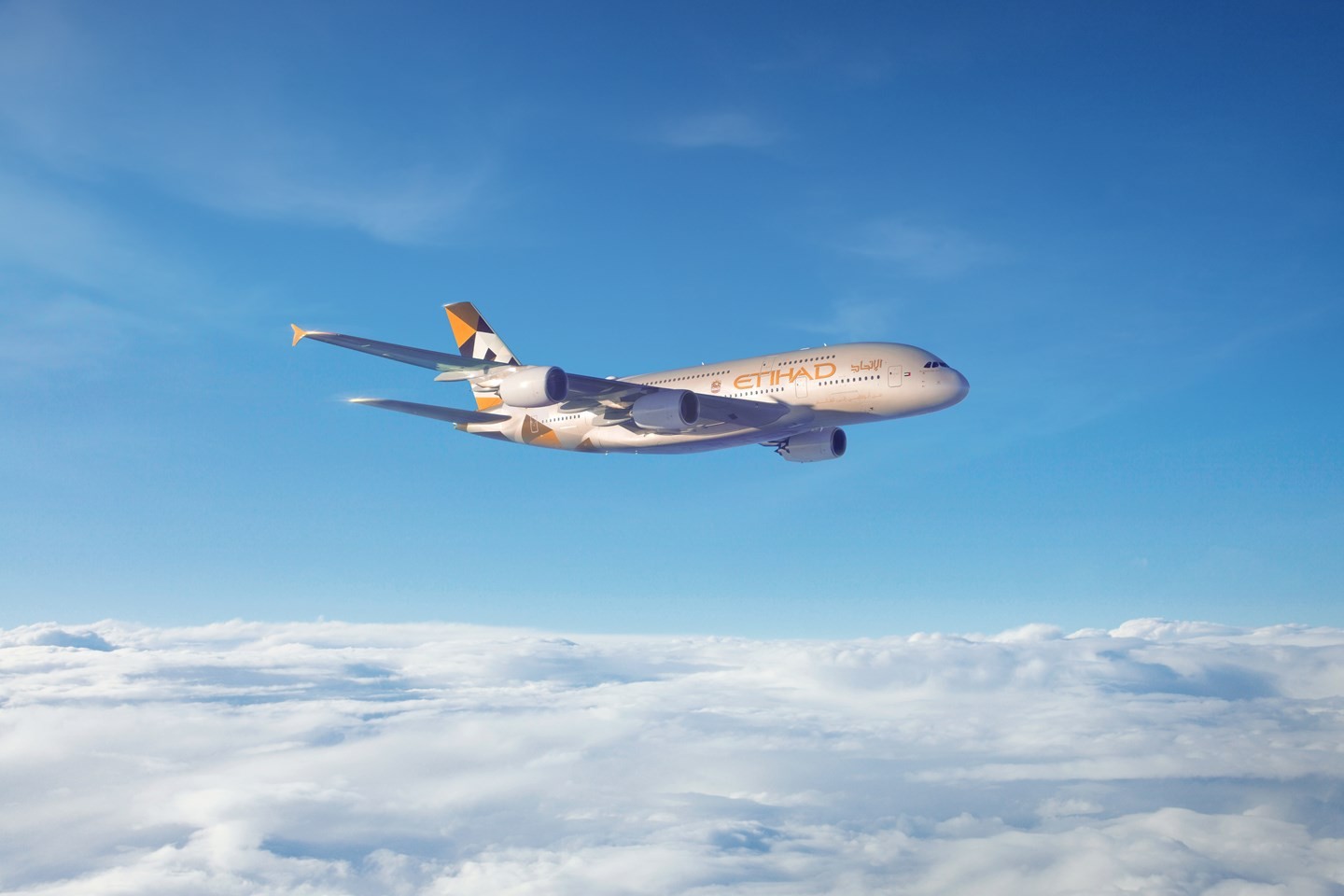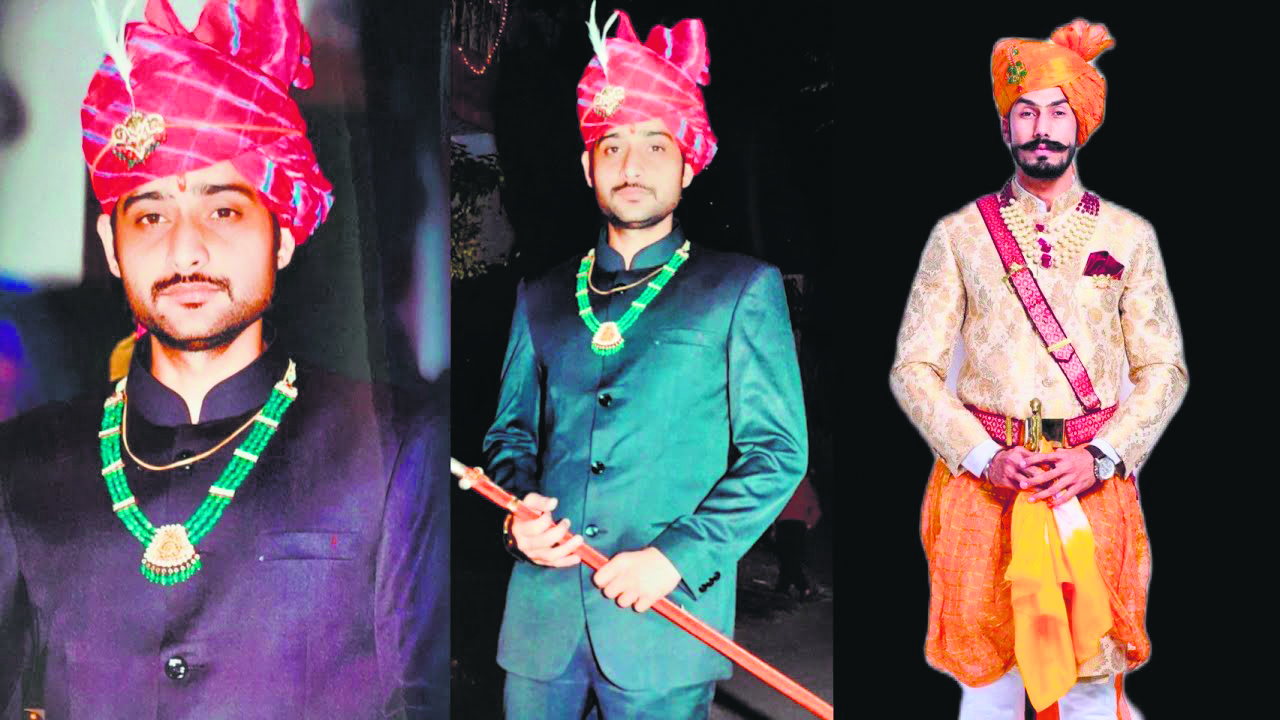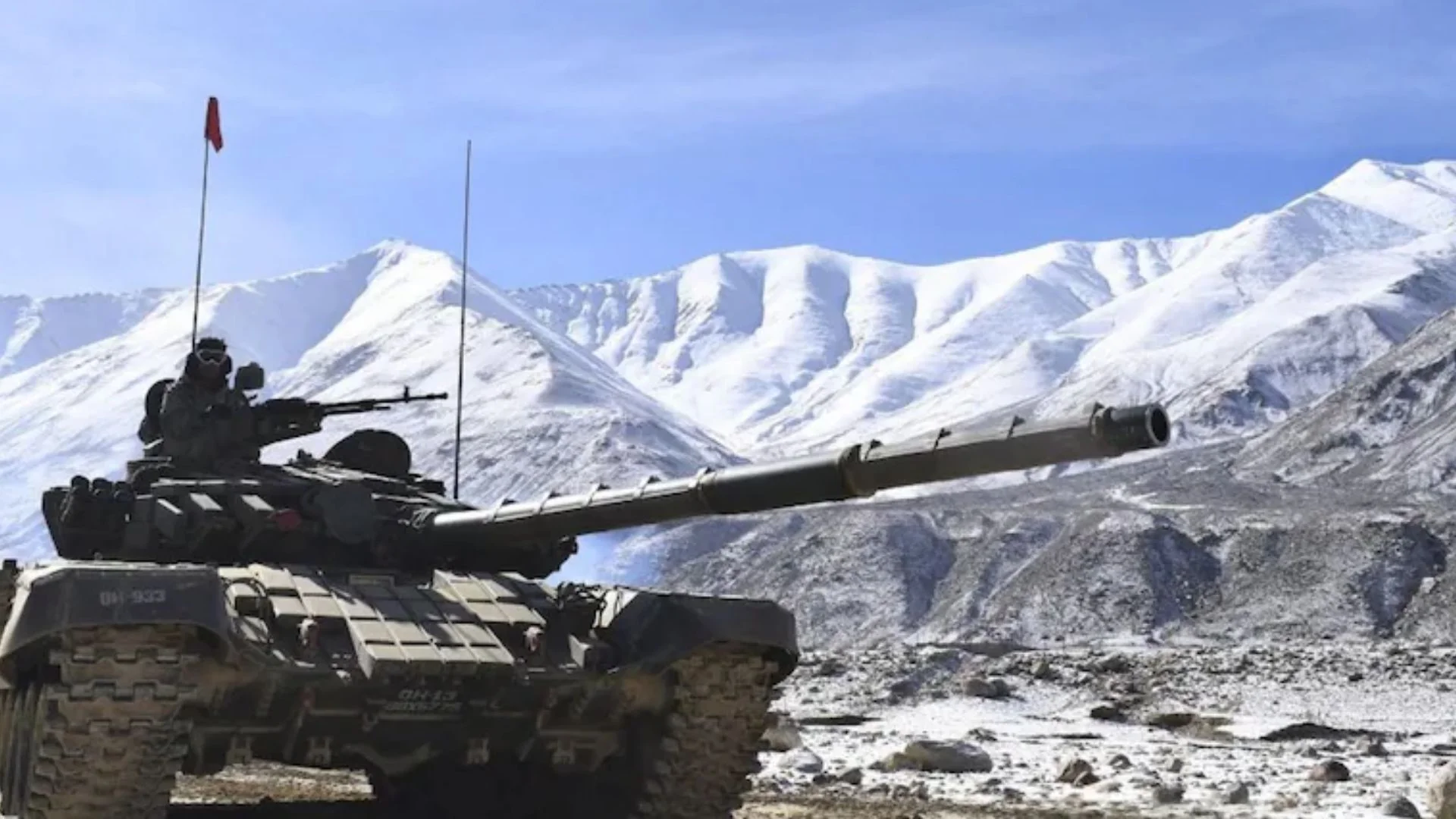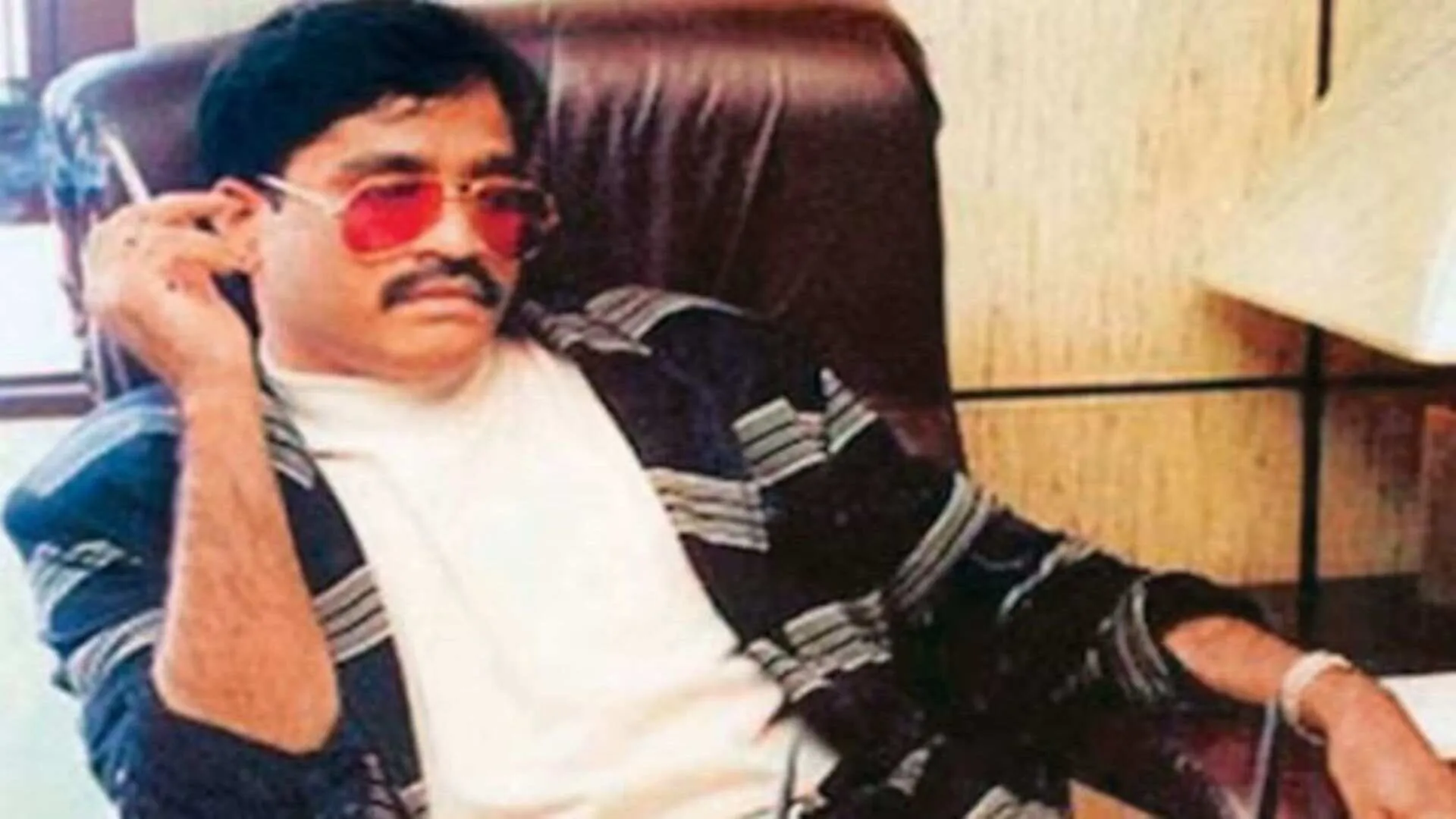The very famous and mysterious ‘Naulakha Haar’, meaning the necklace worth Rs 9 lakh, which hap- pened to be a huge sum in the early 19th century, was a neck- lace comprising the best quali- ties of emeralds, pearls and diamonds. This necklace was bought by the famous Peshwa Baji Rao for a heavy sum of Rs 9 lakh. This jewellery was then sold off to then Prime Minister Jung Bahadur Rana for a mere amount in comparison to the original price. It was in the early 20th century, when Prime Minister Dhir Shumshere sold it off to Maharaja Rameshwar Singh of Darbhanga who was said to have one of the best jewellery collections ever. This was done as Prime Minister Dhir Shumshere was in urgent need of funds for his political campaign.
The Rana women were dressed much grander than the Rana men. They were experts in draping sarees to look like a Victorian ball gown. Voluminous layers of cotton pantaloons were followed by draping of embroidered sarees made of chiffon and silk. The dresses worn by Rana women were heavily influenced by European style.
This was also due to Jung Bahadur Rana being one of the first rulers from South Asia to travel away from the region. It was said to be an omen to travel anywhere that far. Hence, most of the Rana women were married off to smaller ruling estates in India as they had not yet travelled abroad. But with the influence of Jang Bahadur Rana’s official royal invitational visit to London, he must have been inspired by their attire. The Rana women also wore saris but it was very different from the typical Indian style of draping. They often are also seen wearing Victorian silk dresses which are covered with heavy precious gems such as emeralds, pearls and gold threads.
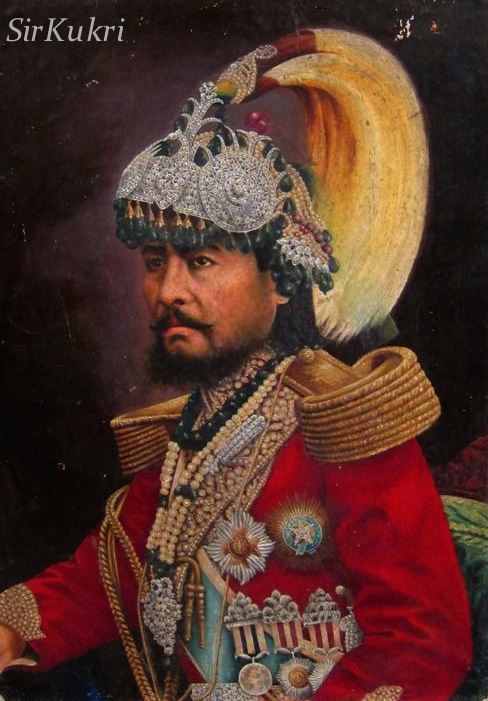
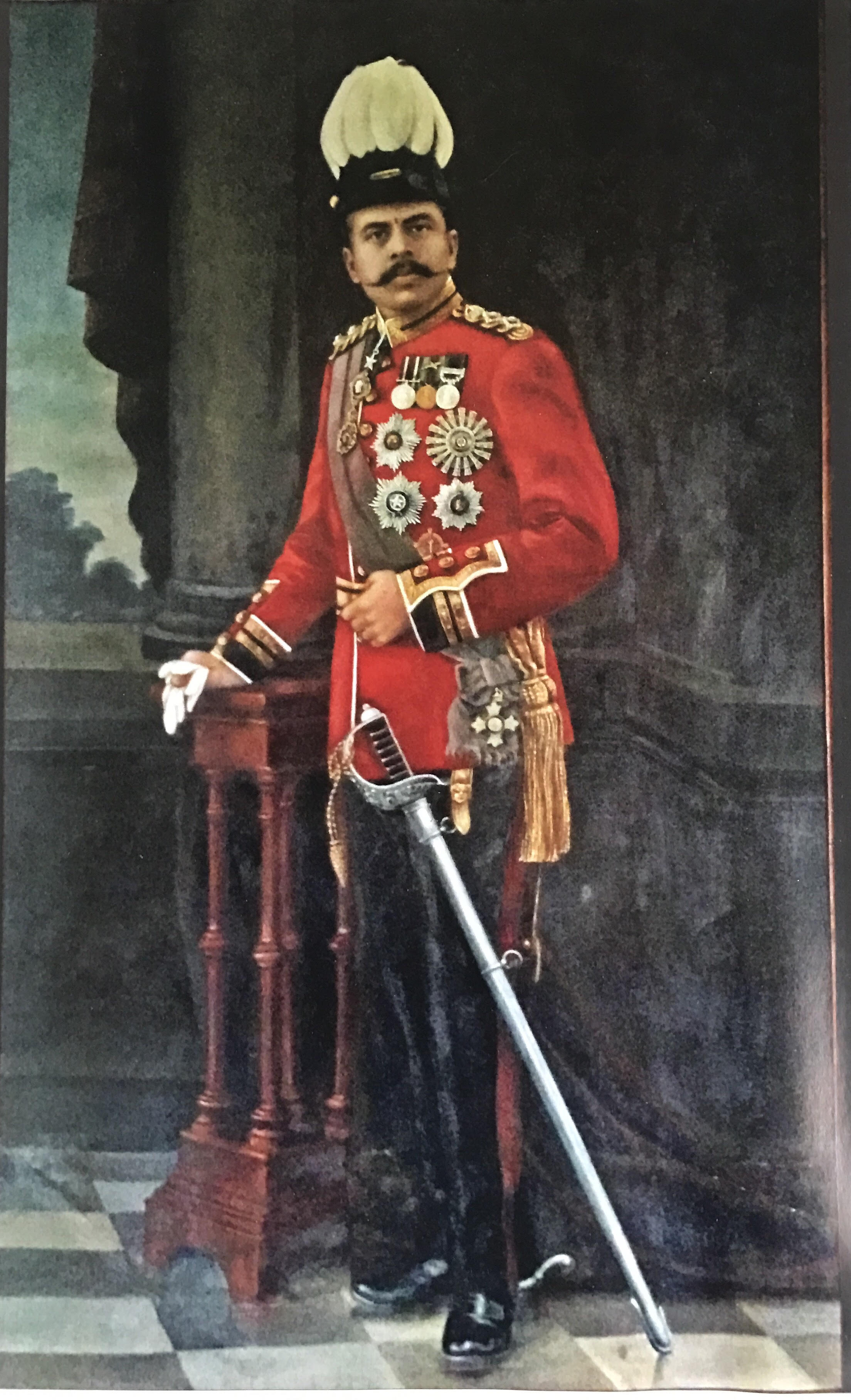
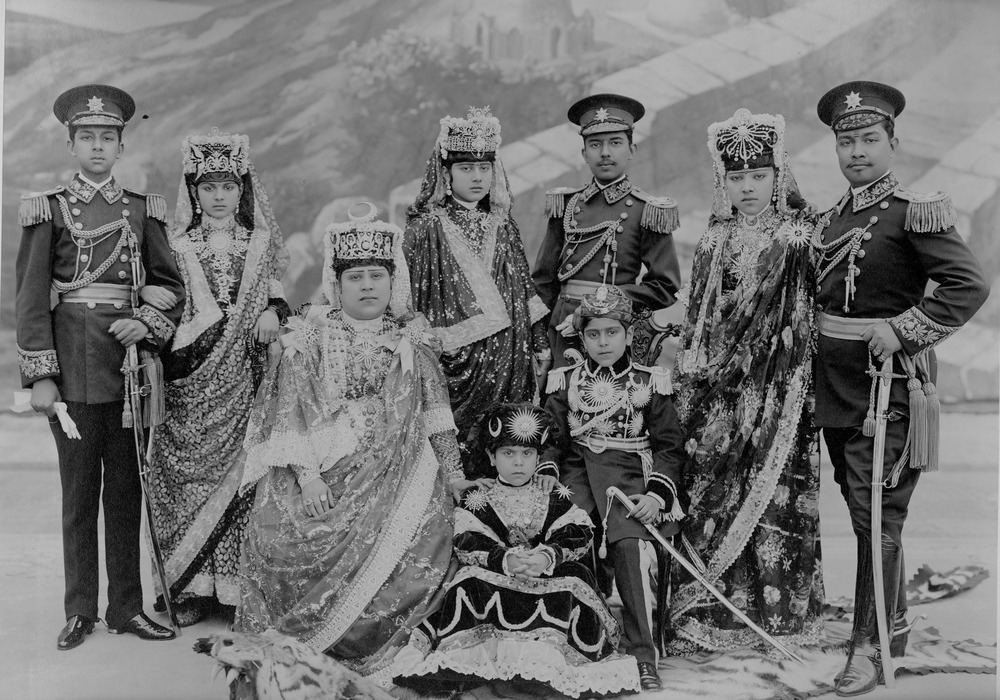
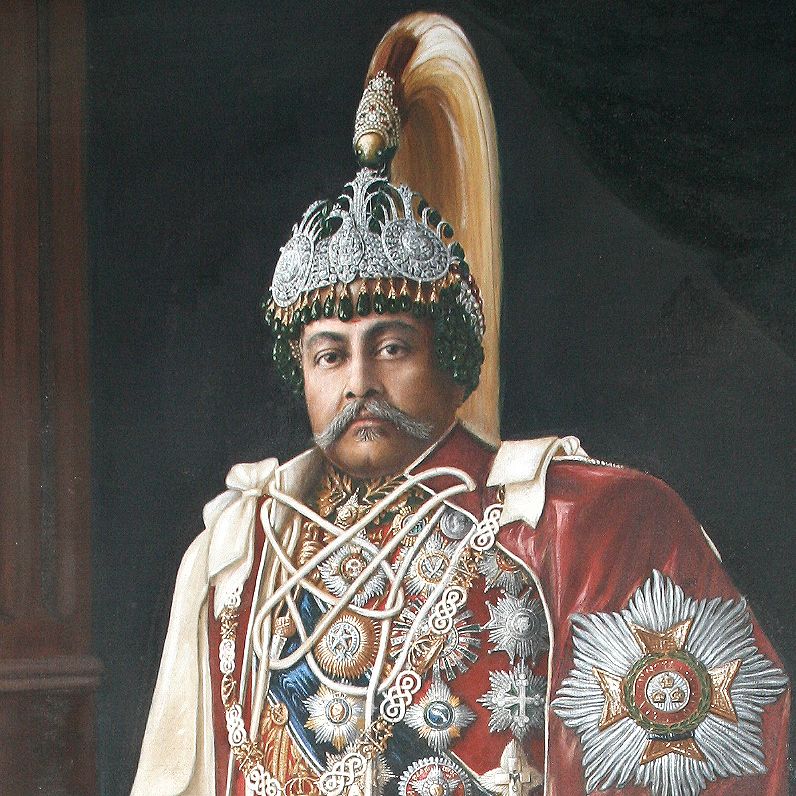
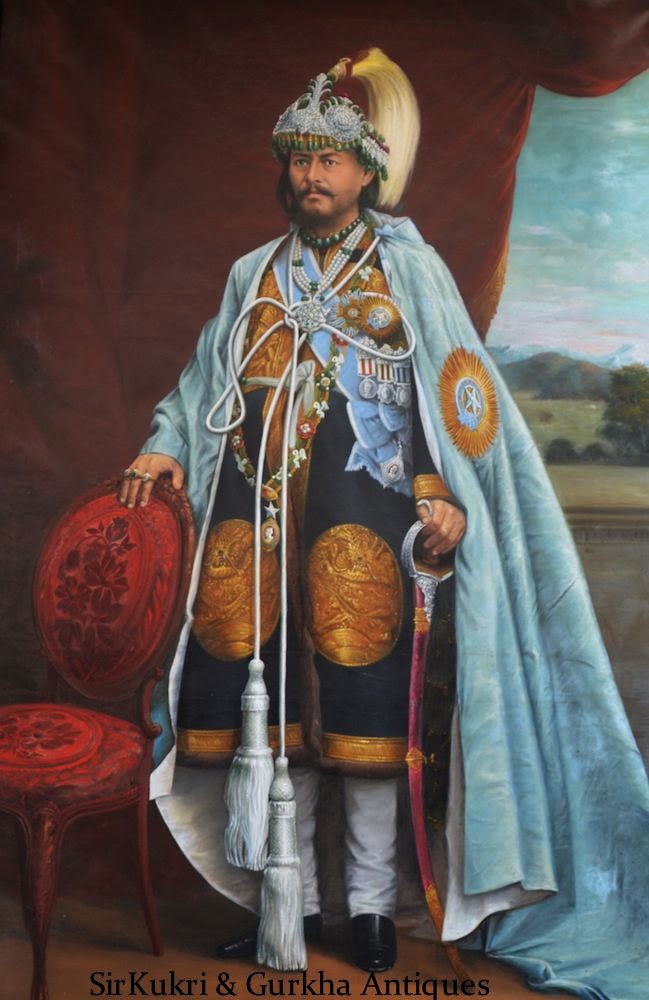
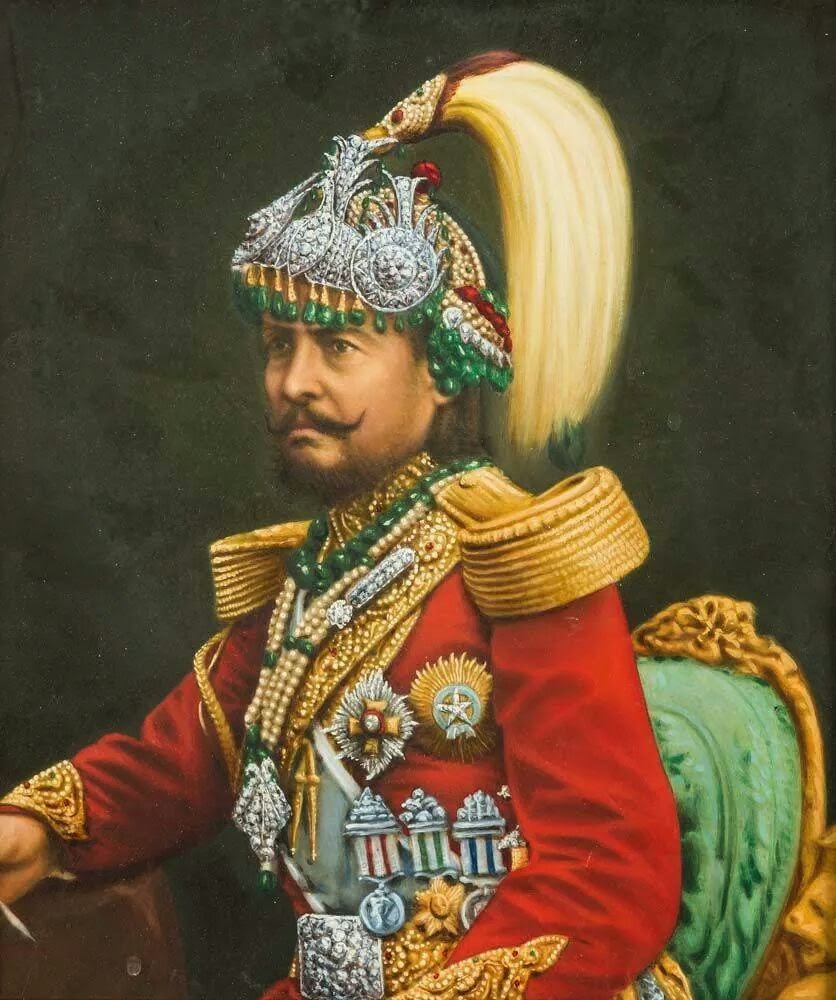
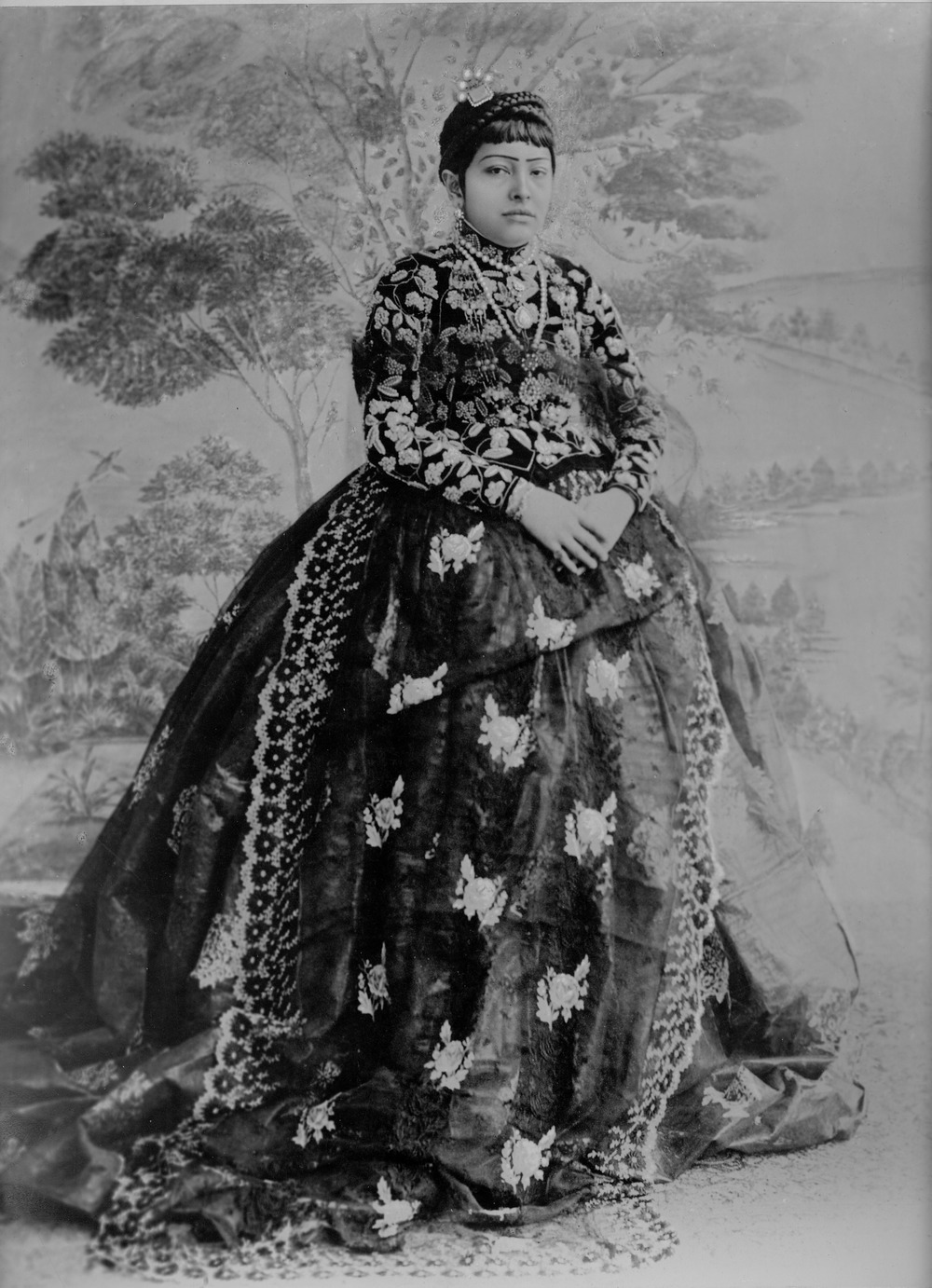
Jewellery was a very important factor for Rana women to show off their wealth. They would be lad- en with heavy jewellery like necklaces, rings, earrings, bracelets, tiaras and motifs. Diamonds, pearls and emeralds were in abundance in every jewellery piece they owned. It is known that Cartier happened to be one of their favourites from many other jewellery labels from Europe. Most of them would be purchased and sent by mail all the way from Europe and many would be made from Calcutta. Each Rana daughter and wife had unique different tiaras and motifs designed especially for them. Their necklaces had nine strands of pearl and other gems and tiaras were laden with diamonds and rare jewels.
Star and moon pins have always been popular motifs among the Rana family as that symbolized their ancestral royal houses.
The Rana men’s formal attire was that of a British military chief. There was focus on the medals they had, which glittered against their red attire. The ‘sirpench’ is the crown that was entitled to every Rana man from the direct families. The ‘sirpench’ was filled with rare and precious stones along with a plume of feathers that were of the rare bird of paradise. These are birds found only in New Zealand. Daura Suruwal, which is the variant of a kurta, was the former national dress of Nepal. This outfit was popularized further after Prime Minister Bir Shumsher wore the outfit to his visit to the United Kingdom. Jung Bahadur Rana further completed the look by wearing it with a coat on top. History says he introduced coats to Ne- pal after he was gifted one by the Queen of England during his visit to the United Kingdom. Therein the tradition of wearing Daura and Suruwal was completed by wearing a coat on top.
The author is a writer, blogger and Editor-in-Chief of Rajputana Collective.

